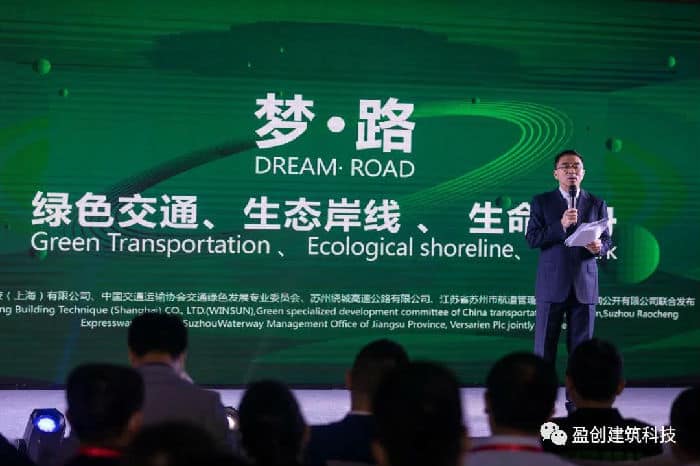At the “Dream Road” Global Winsun Conference held by Winsun, and at the architectural 3D printing technology and procurement meeting held in Shanghai Qingpu Yingchuang Recycling Industrial Park, the company introduced its latest progress and upcoming projects, Including colored buildings and graphene structures.
Among the latest innovations, Yingchuang 3D printing construction technology has achieved the construction of buildings by combining 3D printing of construction equipment with 5G networks, artificial intelligence, big data, cloud computing, blockchain, industrial Internet, and other innovative technologies.

The company’s ongoing research also includes big data analysis of new materials used for printing architectural inks, blockchain management of recycled and recycled resources, and the application of 3D printed architectural global industrial Internet technology. This year, Yingchuang, together with the Highway Traffic Environment Research Center of the Highway Science Institute of the Ministry of Transport, the Suzhou Waterway Office, and the Suzhou City Ring Expressway, implemented 3D printing construction technology in transportation and water conservancy projects.
Many well-known individuals from China and the international market that is developing Winsun (including the United States, Australia, Mexico, Nigeria, South Africa, New Zealand, Brazil, and the Middle East) participated in the conference through the following methods: remote video connection. Representatives from the Sino-British 3D Printing Graphene Application Research and Development Center and more than 200 domestic and foreign guests attended the meeting.
During the meeting, Chinese Premier Li Keqiang delivered a speech at the third meeting of the 13th National People’s Congress. He emphasized the need to strengthen the construction of new infrastructure, develop a new generation of information networks and expand 5G applications.
In April last year, the Chinese government determined the scope of new infrastructure, including innovative infrastructure, which will become one of the new driving forces for China’s transition to socio-economic development. The core of the new infrastructure is digitalization. Yingchuang Construction Technology (Shanghai) Co., Ltd. has been focusing on the research and development of 3D printed buildings for 19 years and has more than 335 national patents and 46 invention patents. Therefore, it is an ideal location for building 3D printed buildings around the world. Digital technology is leading disruptive changes in infrastructure.
At the conference site, Yingchuang showed the whole process of 3D printing infrastructure. Yingchuang uses self-developed cement mixed ink, which shows that the construction 3D printing technology can reduce the construction complexity, shorten the construction time, reduce the cost, and also greatly reduce the number of on-site construction personnel, and at the same time improve the operational safety. In addition, it has many advantages, such as customization, low carbon emissions and energy saving.
As early as 2018, Yingchuang proposed the concept of a green recycling industry for 3D printed buildings by integrating renewable and recyclable urban construction, steel manufacturing, coal and chemical industries, energy production and sand collection technologies. Winsun claims that its printed wall has the same hardness as the traditional C30 concrete wall, but it is more environmentally friendly.

At the conference, Yingchuang showed four main application scenarios, which are suitable for four different building 3D printing, and opened the door for color buildings. These projects include 3D printing the ecological coastline in the restoration of traditional rivers; 3D printing of the 70-meter-long highway sound barrier (S58 Shanghai Changzhou Expressway); the location of the meeting itself: the meeting site: Ying Chuang’s own 4-storey building, accounting for 3200 square meters, 3D printing in the isolation ward in the emergency of COVID-19, and 3D printing in the world’s largest demonstration building.
Ma Yihe, chairman of Yingchuang Construction Technology (Shanghai) Co., Ltd., said at the meeting that transportation construction, urban community renewal, rural construction aestheticization, and solid waste recycling will become important areas for the company in the future. He said: “In the near future, 3D printed buildings will be widely used in municipal, water conservancy, road, construction, underground and other engineering projects to promote the green upgrading and transformation of China’s traditional manufacturing industry and use science and technology to empower the industry. Manage the environment, improve ecology, and create value.”


